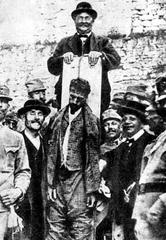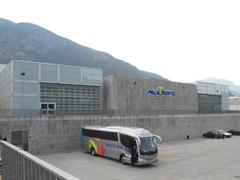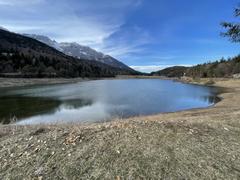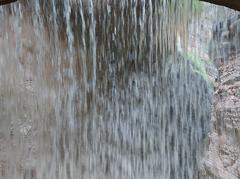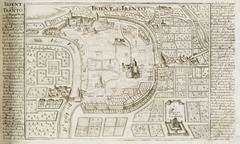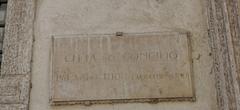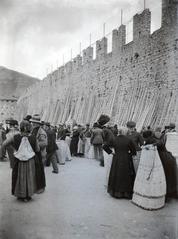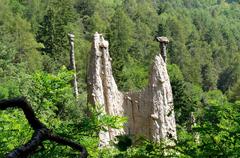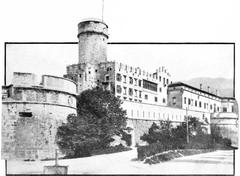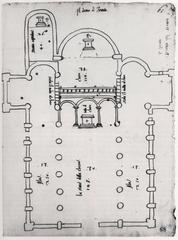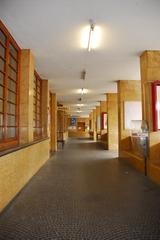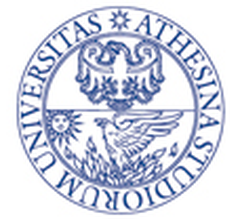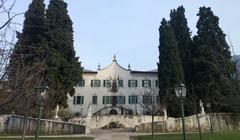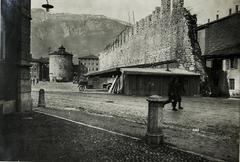Tridentum Visiting Hours, Tickets, and Guide to the Roman City Beneath Trento
Date: 04/07/2025
Introduction: Discovering Tridentum’s Hidden Depths
Beneath the bustling streets of modern Trento, Italy, lies Tridentum—an exceptional Roman city that has preserved its story for over two millennia. Founded in the 1st century BCE, Tridentum was a crucial hub that linked the Mediterranean world to northern Europe via major Alpine trade and military routes, including the famed Via Claudia Augusta. The city’s name, thought to mean “city of three teeth,” alludes to the three hills—Doss Trento, Doss Sant’Agata, and Dosso di San Rocco—that surround it, highlighting its strategic and symbolic importance.
Tridentum’s archaeological remains, from sturdy city walls and mosaic-adorned homes to elaborate water systems, reveal the sophisticated urban planning typical of Roman settlements. Today, these layers of history are best experienced at the Spazio Archeologico Sotterraneo del Sas (S.A.S.S.), an underground museum beneath Piazza Cesare Battisti, and at other key sites such as the Basilica Paleocristiana di San Vigilio and the remains under Palazzo Lodron. Together, they offer a vivid window into the city’s evolution from its Roman roots through the early Christian and medieval periods.
Modern Trento seamlessly weaves these ancient layers into its vibrant urban fabric, inviting visitors to traverse a living timeline from antiquity to the present. Whether you are a passionate historian, a traveler seeking unique cultural experiences, or a curious visitor, Tridentum’s ruins promise an immersive journey through the heart of the Roman Alps (ArcheoTrentino, Ostello di Trento, Visit Trentino).
Table of Contents
- Historical Overview of Tridentum
- Urban Layout and Infrastructure
- Key Archaeological Sites and Visitor Information
- Tickets, Passes, and Accessibility
- Travel Tips and Nearby Attractions
- Frequently Asked Questions (FAQs)
- Sources
Historical Overview of Tridentum
From Pre-Roman Foundations to Roman Municipium
Before the Romans, the Trento area was inhabited by the Rhaetians, who established fortified settlements on the surrounding hills. Roman conquest between 50 and 40 BCE led to the founding of Tridentum as a municipium—an officially recognized city within the Empire. Emperor Claudius later designated Tridentum as a “splendidum municipium,” conferring citizenship to its inhabitants, a historic milestone commemorated by the Tabula Clesiana, a bronze tablet displayed at the archaeological site (ArcheoTrentino).
Strategic Role and Urban Evolution
Tridentum’s location in the Adige Valley made it a pivotal crossroads for trade, military, and communication routes. Its urban fabric—characterized by a grid of streets, fortified walls, public buildings, and artisan quarters—reflects the advanced planning and engineering of Roman city builders. Even as the Roman Empire waned, Tridentum remained a vital regional center, evolving through the early Christian period and into the medieval era as the foundation of present-day Trento (Ostello di Trento, Italia.it).
Urban Layout and Infrastructure
Key Features of Ancient Tridentum
- City Walls and Gates: Defensive stone walls and towers defined the city’s perimeter.
- Forum and Public Spaces: The civic heart of Tridentum, likely beneath today’s Church of Santa Maria Maggiore.
- Residential Areas: Domus (Roman houses) with mosaic floors, courtyards, kitchens, and underfloor heating.
- Road Systems: Paved main arteries (cardo and decumanus) and minor streets, some still visible in the S.A.S.S. area.
- Water Systems: Aqueducts and lead pipes supplied fresh water from local hills and rivers.
- Commercial Workshops: Glassmaking shops, tabernae (wine shops), and artisan quarters.
- Necropolis: Burial grounds outside the city walls, with recent discoveries expanding our knowledge of the region’s earliest settlements (The Archaeologist).
Key Archaeological Sites and Visitor Information
Spazio Archeologico Sotterraneo del Sas (S.A.S.S.)
- Location: Piazza Cesare Battisti, Trento
- Opening Hours:
- June – September: 09:30–13:00 and 14:00–18:00
- October – May: 09:00–13:00 and 14:00–17:30
- Closed Mondays (except holidays), January 1, November 1, December 25
- Tickets:
- Adults: €8
- Reduced (students, seniors): €5
- Under 18: Free
- Family and group discounts available
- Accessibility: Elevators and pathways accommodate most mobility needs; video guides, audio guides, and sign language resources are available (Trentino Cultura).
Highlights
- Walk along Roman streets, city walls, and the remains of residential and commercial buildings.
- View the famed Mosaic of Oceanus and the Tabula Clesiana replica.
- Participate in interactive 3D reconstructions and themed exhibitions.
- Family-friendly workshops, educational programs, and special events are held year-round.
Other Roman and Historical Sites
- Basilica Paleocristiana di San Vigilio: Early Christian basilica remains beneath Trento Cathedral, accessible via guided tours (Bewitched by Italy).
- Area Archeologica di Palazzo Lodron: Southern city walls, a minor cardo, tower, and private dwellings; interpretive panels and multimedia displays enhance the visit (Cultura Trentino).
- Castello del Buonconsiglio: Medieval castle with museum sections dedicated to Trento’s Roman heritage (Its All Trip To Me).
- Casa Romana and Villa Romana di Orfeo: Remains of Roman villas occasionally open for guided tours.
Tickets, Passes, and Accessibility
- Trentino Archeo Pass: Offers unlimited annual access to participating archaeological sites and museums; available at main sites and online.
- Trentino Guest Card: Free or discounted entry to many Trento attractions for guests staying at participating accommodations (Visit Trentino).
- Reservations: Recommended during peak periods and for guided tours.
- Accessibility: Most main sites are wheelchair accessible, but some underground areas have uneven terrain. Contact ahead for specific needs.
Travel Tips and Nearby Attractions
- Getting There: Tridentum is centrally located; Trento’s main railway station is a 10-minute walk from Piazza Cesare Battisti. Parking is available at nearby garages. Local buses and taxis serve the area (Visit Trentino).
- Visit Duration: Plan 1–1.5 hours for the S.A.S.S.; more if combining with other sites.
- Best Time to Visit: Spring and early autumn offer pleasant weather and fewer crowds.
- Nearby Attractions: Trento Cathedral, Castello del Buonconsiglio, MUSE Science Museum, and lively cafés and restaurants (Love Trentino).
- Combined Itineraries: Explore the compact city center by walking between archaeological sites, historical squares, and museums.
Frequently Asked Questions (FAQs)
Q: What are the Tridentum visiting hours?
A: S.A.S.S. is open 09:00–13:00 and 14:00–17:30 (October–May); 09:30–13:00 and 14:00–18:00 (June–September); closed Mondays except holidays (Cultura Trentino).
Q: How much do tickets cost?
A: Adults €8, reduced €5, under 18 free, with discounts for families and groups.
Q: Are guided tours available?
A: Yes, in multiple languages; advance booking is advised.
Q: Is the site accessible for visitors with disabilities?
A: Major sites are accessible; contact ahead for specific needs.
Q: Can I photograph the site?
A: Yes, non-flash photography is generally permitted.
Sources
- ArcheoTrentino
- Ostello di Trento
- Visit Trentino
- Cultura Trentino – S.A.S.S.
- Cultura Trentino – Palazzo Lodron
- Italia.it
- Bewitched by Italy
- Its All Trip To Me
- The Archaeologist
- Love Trentino
- The Tourist Checklist
Final Thoughts: Tridentum—A Living Roman Legacy
Tridentum offers a rare opportunity to explore an ancient Roman city seamlessly integrated into Trento’s modern life. The site’s well-preserved ruins, interactive exhibits, and comprehensive visitor services make it an essential stop for anyone interested in history, archaeology, or cultural discovery.
For the most up-to-date information, always consult the official Cultura Trentino website or Visit Trentino before your trip.
Ready to embark on your journey through time? Download the Audiala app for interactive guides, stay informed on upcoming events, and follow us on social media to enrich your Tridentum adventure.

